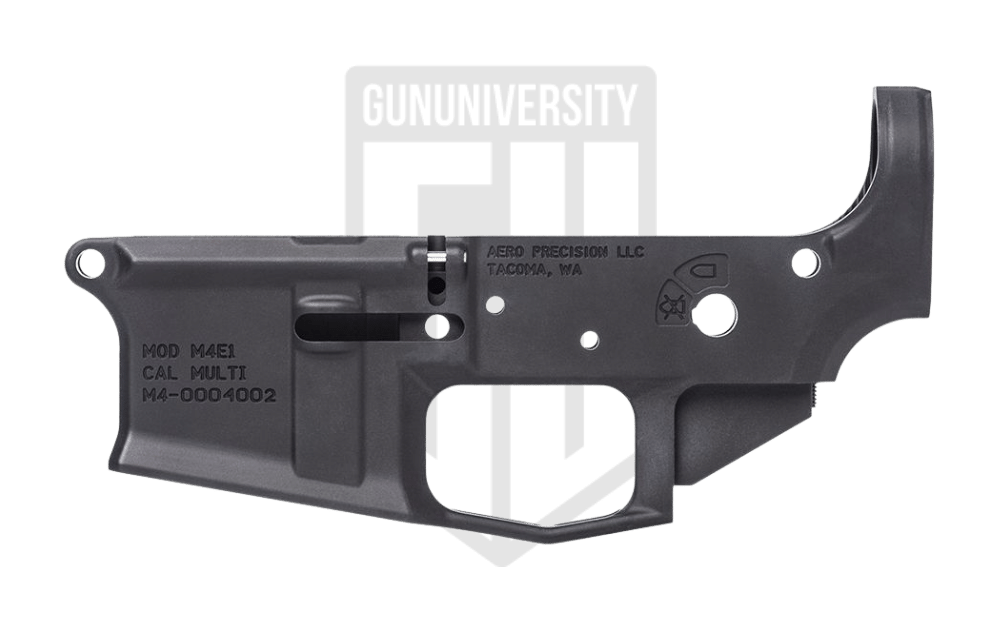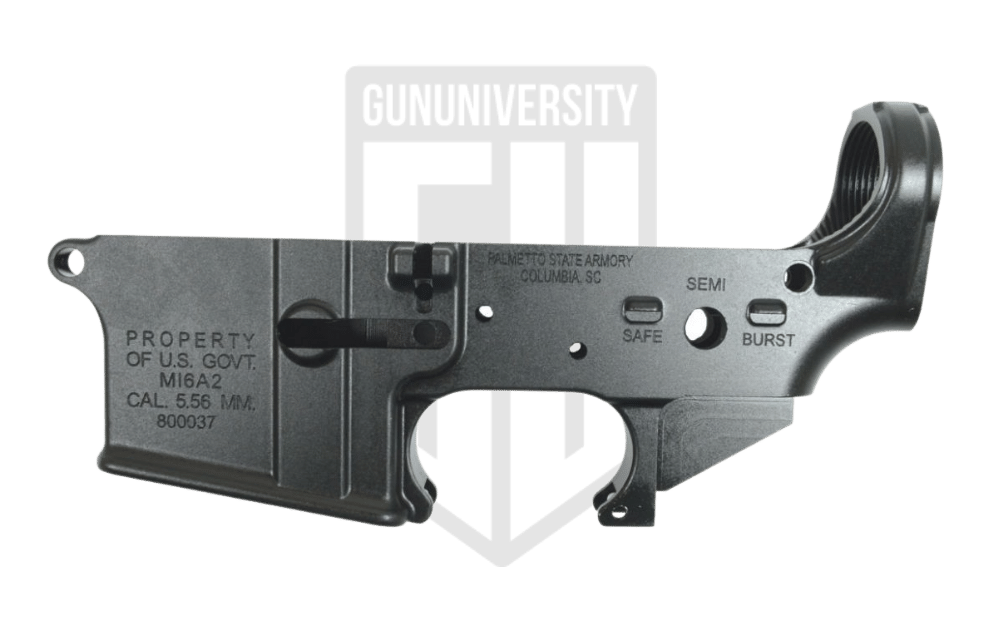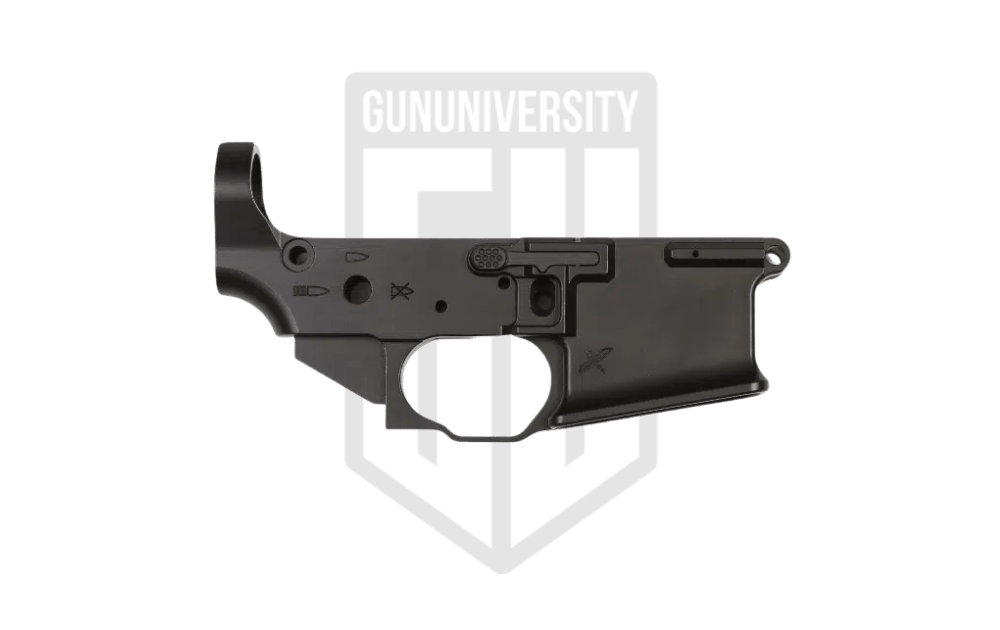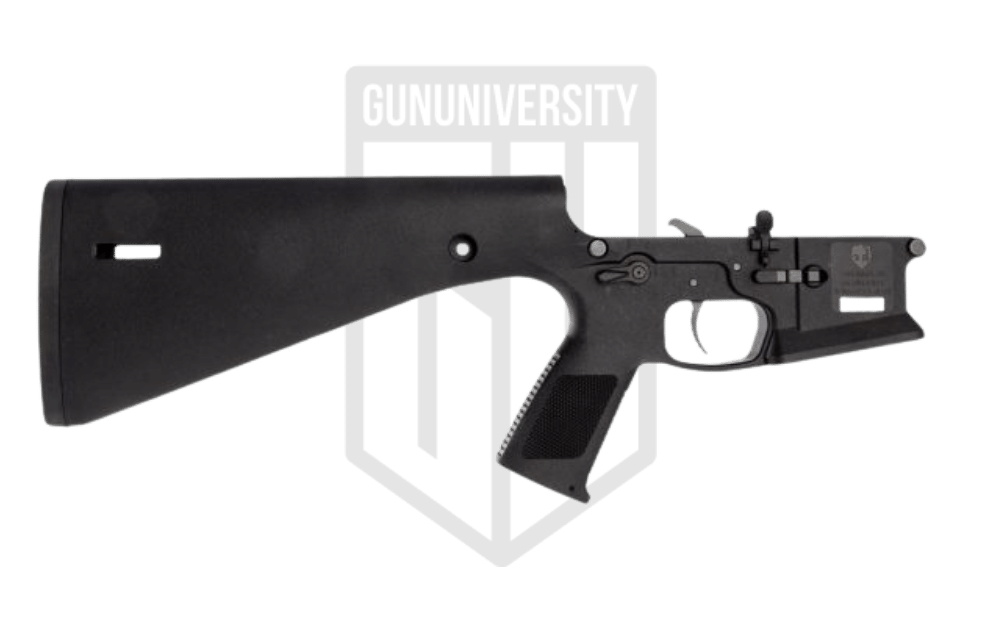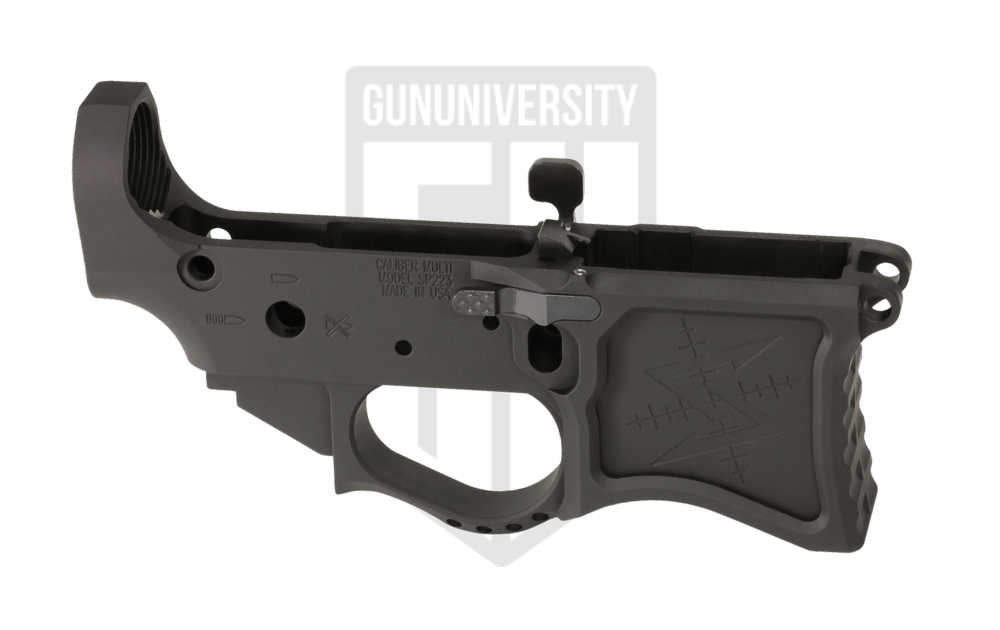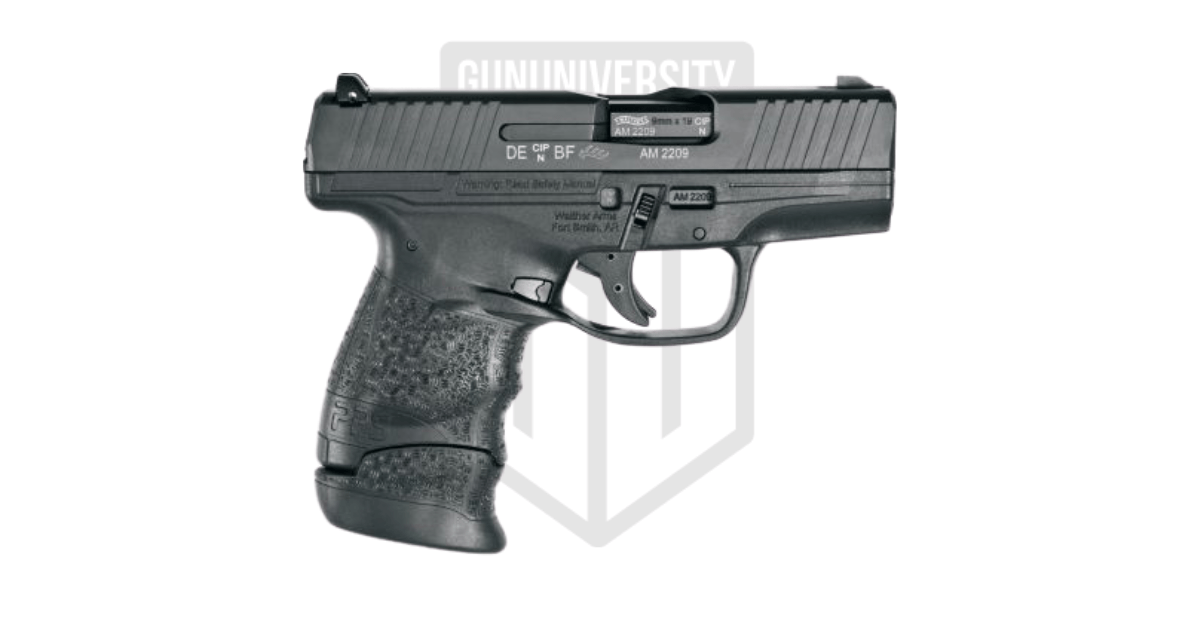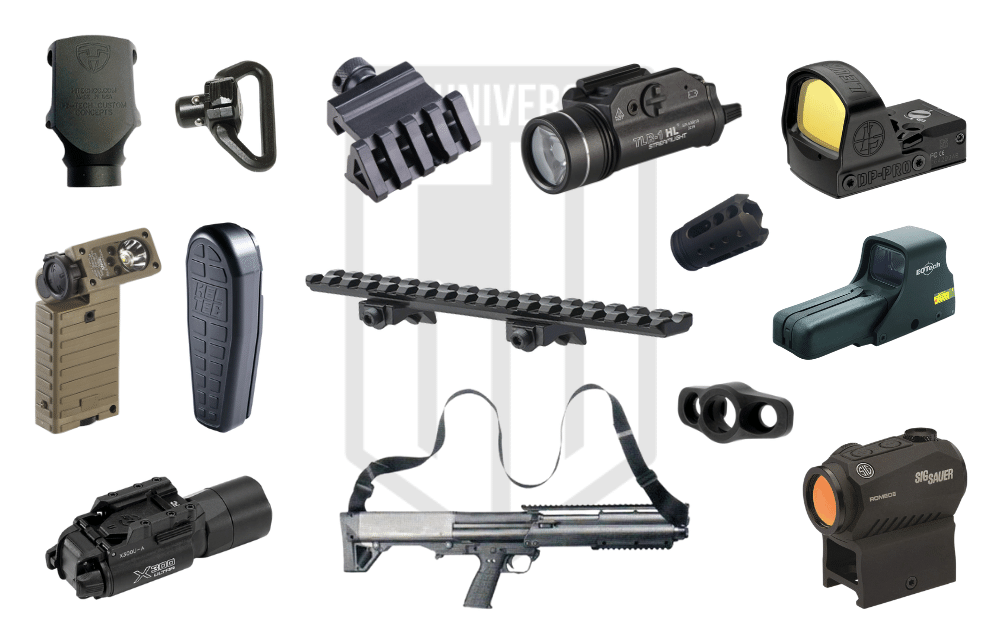Best AR-15 Lowers: Lowers For Your Next Build
When you start your journey to building your first AR-15, you’ll learn a lot. You’ll be forced to research each and every piece and choose what will work best for your needs. One of the more interesting decisions you’ll have to make is the lower receiver. Like everything in the AR-15 world, you have tons and tons of options. You can settle on your classic MIL-SPEC design and have a darn nice rifle, or you can explore the best AR-15 lowers available and go in a different direction.
When you start your journey to building your first AR-15, you’ll learn a lot. You’ll be forced to research each and every piece and choose what will work best for your needs. One of the more interesting decisions you’ll have to make is the lower receiver. Like everything in the AR-15 world, you have tons and tons of options. You can settle on your classic MIL-SPEC design and have a darn nice rifle, or you can explore the best AR-15 lowers available and go in a different direction.
The AR-15 has been around long enough to have grandkids, so it’s no big surprise the lower has evolved. These days you have numerous options for unique, advanced, ambidextrous, or even just good-looking lower, and we’ve gathered the best of the best.
Today we are presenting the best AR-15 lowers on the market and providing an in-depth explanation of why. We are also looking at a few factors you need to consider when shopping for your lower receiver.
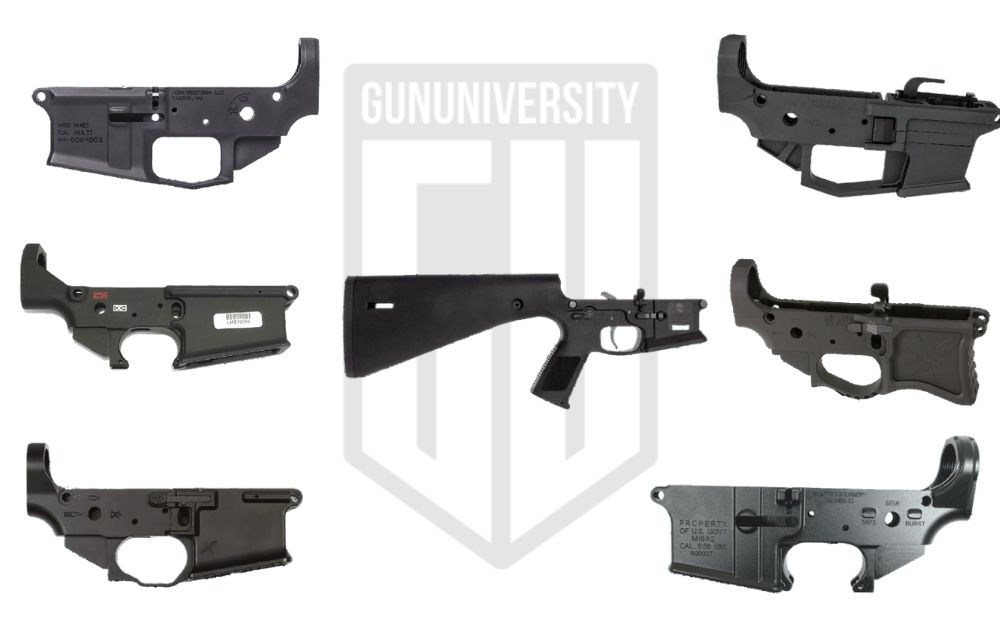
Lower Receivers 101
One of the reasons AR-15s are so popular is because of their modularity. By using different combinations of parts, you can build tiny AR-15 pistols meant for close-up defensive work or long-range rifles and everything in-between.
This is why AR-15s, especially the act of building them or modifying them yourself, are sometimes called “legos for adults.”
The AR-15 is effectively two halves – an upper receiver and a lower receiver each with their component parts attached.
The lower receiver has been defined as the part that is a “firearm” under federal law and it is the part that contains the firearms control group (trigger, hammer, safety, etc) and the buffer tube or receiver extension (the part to which the buttstock or pistol brace attaches and which contains a buffer and spring to help operate the firing mechanism). The upper receiver contains the bolt and barrel and is the part to which the sights or optics are attached.
When you purchase an AR-15 lower, even though it looks like it is only a gun part, you are buying a part that is defined as and treated as a “firearm” and therefore it must be purchased like any other gun online and must go through an FFL.
Best AR-15 Lowers
 |
| Check Price | |
 |
| Check Price | |
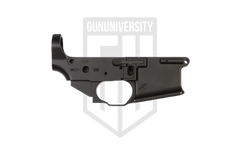 |
| Check Price | |
 |
| Check Price | |
 |
| Check Price | |
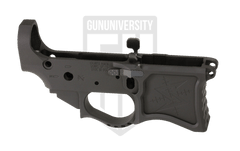 |
| Check Price | |
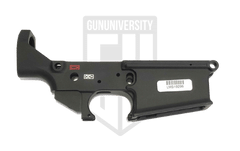 |
| Check Price |
Best AR-15 Lowers
- Aero Precision M4E1
- PSA AR-15 Lower
- Sons of Liberty Gun Works FCD Lower
- KE Arms KP 15
- Angstadt Arms 0940 Lower
- Seekins Precision SP223
- LMT MARS-L
Best AR-15 Lowers Specifications
Below is a list of our Best AR-15 Lowers. Here we can compare and line up the specs from each of the products and help you make the best decision possible.
| AR15 Lowers | Material | Construction Type | Weight |
|---|---|---|---|
| Aero Precision M4E1 | 7075 Aluminium | Forged | 8.61 ounces |
| PSA AR-15 | 7075 Aluminium | Forged | 8.5 ounces |
| Sons of Liberty Gun Works FCD Lower | 7075 Aluminium | Billet | 10.5 ounces |
| KE Arms KP 15 | Polymer | Injection Molded | 16.4 Ounces |
| Angstadt Arms 0940 Lower | 7075 Aluminium | Billet | 10 ounces |
| Seekins Precision SP223 | 7075 Aluminium | Billet | 10.9 ounces |
| LMT MARS-L | 7075 Aluminium | Forged | 27 ounces |
Best AR-15 Lowers – Reviews
Now we’ve had an overview look at our list, so let’s take the time to individually review each item. In this section we’ll be revisiting our specs, speaking about the product, and looking at the pros and cons.
Aero Precision M4E1 Specs
- Material – 7075 Aluminiu 7075 Aluminium
- Construction Type Forged
- Weight 8.61 ounces
Aero Precision M4E1 Review
Aero Precision is a company I keep going back to. They innovate, produce, and do so at affordable prices. Aero precision is primarily an AR-15 company, and one of their most popular products is the M4E1 lower receivers. Aero is a builder-friendly company, and the M4E1 reflects that with this lower. They also integrate a number of great features not commonly found on MIL-SPEC AR-15 lowers.
From a builder’s perspective, the M4E1 might be the easiest to assemble lower receiver ever constructed. Aero simplified two of the most frustrating parts of assembling a lower by using a threaded bolt catch roll pin and a threaded takedown pin detent recess. This makes installation so much simpler and prevents springs from flying across the room, and makes things so much quicker. On top of that, while the M4E1 isn’t MIL-SPEC, it works with all MIL-SPEC parts kits.
AERO Precision added two features we don’t commonly see on standard lower receivers. First, they integrated a flared magwell to make reloads faster and more intuitive. This is part of the lower and not some removable add-on. Additionally, they used an integrated trigger guard that’s large and easy to use for gloved use. It’s a nice touch. An upper tension screw allows you to tighten or loosen your lower fit with the upper to eliminate slop.
I mentioned it looks nice, and admittedly looks don’t matter much. Still, I’ll give Aero credit for producing a forged lower that looks as nice as a billet lower. Aero Precision makes more affordable MIL-SPEC lowers but the M4E1 grants you a few extra features and still doesn’t break the bank.
Aero Precision M4E1 Pros and Cons
- Easy To Build With
- Integrated Features
- Affordable
- Some Won’t Like a Fixed Trigger Guard
Aero Precision M4E1 Deals
PSA AR 15 Lower Specs
- Material 7075 Aluminium
- Construction Type Forged
- Weight 8.5 ounces
PSA AR-15 Lower Review
As a best-of list, it’s hard not to fill this list with studs. Lower receivers that do something different regardless of the price. However, I know some people are likely looking for a basic MIL-SPEC lower receiver for their next build. If you want a basic lower receiver at a good price point, it’s hard to beat Palmetto State Armory and their dozens of lower options. They offer everything from your basic lower to clone-ready designs and some special editions.
At their core, these are your standard 7075 forged aluminum lowers designed to allow you to build your rifle as you see fit. For around 60 bucks, you can get a basic receiver that’s going to have zero problems being at the core of your rifle build. However, the price may increase as you begin to get more special editions.
Some of my favorite special editions are the M4, M4A1, and similar military-marked lower receivers. These are perfect for the cloner looking to build an M4 clone down to the correct markings. Heck, they even make stealth lowers with no company markings and just the required markings like serial numbers. There is some option out there for you from PSA, and it will do what a lower needs to do.
Don’t expect it to have any fancy features or special touches to make it lighter, more ergonomic, and somehow fancier than any other receiver. It’s a simple, MIL-SPEC lower receiver that gets the job done.
PSA AR-15 Lower Pros and Cons
- Functional
- Simple
- Affordable
- Does Nothing New
PSA AR-15 Lower Deals
Sons of Liberty Gun Works FCD Specs
- Material 7075 Aluminium
- Construction Type Billet
- Weight 10.5 ounces
Sons of Liberty Gun Works FCD Review
Sons of Liberty Gun Works / Forward Controls Design Billet Ambi AR-15 is a lot to type to describe something as simple as a lower receiver. Let’s make that a little shorter and call it the SOLGW lower. SOLGW teamed up with FCD to produce a modern lower receiver designed for the modern rifleman. This lower is designed by FCD and produced under the quality control-obsessed SOLGW.
This is a billet lower receiver, and like most billets, it features the clean lines and corners of a billet lower receiver as well as an integrated trigger guard. Have no fear if you live in cold weather environments. The trigger guard is huge and accommodates a gloved hand. That trigger guard is a Forward Controls design and is built to place more room in front of the trigger to help you rock the magazine into the magwell.
The magazine release slot is specifically built to accommodate the Forward Controls enhanced magazine release-ambidextrous. The fence around the magazine releases is higher and better protected. We have a preinstalled right-side bolt release, and once your left side is installed, you can release the bolt any way you want. Toss on an Ambi safety, and your lower is fully ambidextrous.
To top it all off, we have a flared magazine well for quicker reloads. With the magwell combined with the integrated trigger guard, you can reload very quickly and intuitively. Of course, the expertise of SOLGW and FCD comes at a cost, and this is not a cheap lower receiver.
While not cheap, it’s extremely well-made, modern, and ambidextrous. It’s perfect for the duty of a defensive rifle, and a lot of the features also work well for competition shooting.
Sons of Liberty Gun Works FCD Pros and Cons
- Ambidextrous Design
- Best QC in the Industry
- Advanced Design
- Expensive
Sons of Liberty Gun Works FCD Deals
KE Arms KP-15 Specs
- Material Polymer
- Construction Type Injection Molded
- Weight 16.4 Ounces
KE Arms KP-15 Review
I’m not someone who hates polymer in firearms, but there is only one polymer lower I can suggest, and it’s the KP-15 from KE Arms. The KP-15 is a monolithic lower receiver made from polymer. When I say monolithic, I mean the lower receiver integrates the stock and pistol grip into a single, seamless piece. The KP-15’s polymer construction is compatible with nearly all AR-15 parts and components. While it differs from traditional aluminum, the KP-15 stands out for its durability, reliability, and solid craftsmanship.
The purpose of polymer is to create a lighter receiver. When you compare a complete KP-15 with a complete standard metal receiver, you see a weight savings of ten ounces. To make polymer work for a lower receiver, KE ARms had to eliminate the most common weak point, which is where the receiver extension attaches to the receiver. This led to the need to make the lower monolithic with a stock and pistol grip.
The KP-15 uses the standard ergonomics you’d expect from an AR-15, with your controls placed where you’d expect them. You also get a massively flared magwell for fast reloads and even a multitude of integrated QD and M-LOK slots for sling attachment. The KP-15 works with most intermediate AR-15 calibers, like .300 Blackout, .350 Legend, 6.8 SPC, 6.5 Grendel, and even 9mm.
The stock is fixed and offers an A1 length of pull. The trigger guard is large enough to accommodate gloves, and the pistol grip is fairly standard. The biggest downside to using the KP-15 is losing a little compatibility with the AR-15 aftermarket. Not everything that works with a standard lower will work with the KP-15.
For those looking for an ultra-light affordable lower receiver, the KP-15 will be tough to beat. It’s well-made and has become quite popular. The KP-15 can ensure your AR-15 is a light and handy carbine and allows you to embrace the polymer revolution.
KE Arms KP-15 Pros and Cons
- Lightweight
- Innovative Design
- Affordable
- Loses some AR-15 Compatibility
KE Arms KP-15 Deals
Angstadt Arms 0940 Lower Specs
- Material 7075 Aluminium
- Construction Type Billet
- Weight 10 ounces
Angstadt Arms 0940 Lower Review
Pistol caliber carbines and AR-15s both share the spotlight in terms of popularity, so it’s no surprise that plenty of pistol caliber carbine AR-15s exist. With that in mind, what lower works best for building a PCC? You certainly have plenty of options these days, and when you consider the desirable factors of a PCC, then it’s easy to settle on the Angstadt Arms 0940 as your lower of choice.
First, you have to consider what magazines you want to use when you go to PCC, and the natural answer is Glock. They are everywhere, affordable and available in a multitude of calibers and capacities. The 0940 accommodates Glock mags. Not only that but you aren’t limited to 9mm. It will work with any medium frame Glock mag, and you can build a 9mm, 40 S&W, or .357 SIG PCC on this lower.
One of the most exciting features is the last round bolt hold open. That’s rare on Glock pattern AR-15 lowers, and Angstadt Arms obviously found a way to make it work. In 2022 I want my bolt to lock when I’m empty. An LRBHO speed-up reloads, and so does that massive magazine. Well, they’ve billeted into this lower and the massive magazine release they’ve installed.
The 0940 would be great for building a defensive carbine, a plinker, or even a competitive PCC. The billeted lower certainly has some style to it, and the lower works with most standard MIL-SPEC parts. If you want a pistol-powered AR-15, then this is a great place to start.
Angstadt Arms 0940 Lower Pros and Cons
- Works with Multiple Calibers
- LRBHO Device
- Huge Magwell and Mag Release button
Angstadt Arms 0940 Lower Deals
Seekins Precision SP223 Specs
- Material 7075 Aluminium
- Construction Type Billet
- Weight 10.9 ounces
Seekins Precision SP223 Product Review
When we get into high-end billet AR-15 lowers, it’s easy to start spending money on looks over function. There is nothing wrong with that, but if you want your gun to look as good as it functions, then the Seeking SP223 is the way to go. This billet lower receiver looks great with its clean lines, sharp angles, and features you can’t find on a forged lower.
Yet, it’s for a purpose. Seeking implements a builder-friendly design and completely eliminated roll pins from your building experience. Roll pins suck, and Seekins agrees. This creates a much smoother, easier building experience. Seekins also includes their enhanced bolt catch with an ambidextrous bolt release built into the receiver from the factory.
This makes it much easier to reload and get a round in the chamber. The right side release sits right above the magazine release and makes it easy to go from empty to condition one with a slight hand movement. The SP223 features an innovative magwell design for quicker and easier reloads as well.
Like most billet lowers, the trigger guard is integrated. While you can’t switch it, you do get a very large trigger guard with room ahead of the trigger for a rock in reload. The Sp223 is a high-quality, easy-to-build, billeted lower receiver.
Seekins Precision SP223 Pros and Cons
- Ambi Bolt Release
- Stylish Design
- No More Roll Pins
- Expensive
Seekins Precision SP223 Deals
LMT – MARS-L Specs
- Material 7075 Aluminium
- Construction Type Forged
- Weight 27 ounces
LMT – MARS-L Review
Lewis Machine and Tool is very much one of those if you know, then you know companies. They aren’t on the lips of every gun owner, but hardcore AR guys know that LMT is one of the best AR companies out there. Their MARS lower is the most modern and innovative design to pop up since Stoner designed the first AR-15. MARS stands for Modular Ambidextrous Rifle System.
The MARS design is currently being used by the New Zealand Defense Forces and meets the definition of high speed, and low drag. The MARS stripped lowers are anything but stripped. LMT includes all of the ambidextrous controls with their stripped lowers. This includes the safety, the magazine release, and the bolt release.
What is special about the MARS lower is the fact they are designed to palace these ambidextrous control as ergonomically as possible, and they are unlike any other lower on the market. A glance at the bolt release reveals that the LMT delivers the most ergonomic option possible for releasing the bolt with your right hand.
LMT designed the lower with a flared magwell to speed up reloads on top of all those ambidextrous controls. While it’s different than any other receiver on the market, it works without issue with standard MIL-SPEC uppers and parts. The MARS-L is easily the most advanced AR lower receiver on the market and is priced accordingly.
LMT – MARS-L Pros and Cons
- Ambidextrous Controls
- Extremely Well Made
- Superbly Ergonomic
- Expensive
LMT – MARS-L Deals
Best AR-15 Lowers – Buyers Guide
Now that we’ve talked about the best lowers let’s just talk lowers. There is surprisingly a lot to consider about the lower. Let’s walk through some of the basics you’ll need to think about when purchasing a lower receiver.
…But MIL-SPEC!
Before we do that, let’s address the ten thousand-pound block of aluminum in the room. I’m not one to throw MIL-SPEC out as cheap garbage, and I don’t worship at its alter either. MIL-SPEC is a perfectly fine route to take for your lower and will likely ensure every part and piece you want will attach to your rifle with ease. However, we’ve come a long way with the AR-15, and the military isn’t one to adapt quickly. Just because it’s not MIL-SPEC doesn’t mean it doesn’t work.
Materials
Aluminum – Back in my day, AR lowers were aluminum, and we walked uphill both ways to get to the gun store! Stoner’s use of aluminum in firearm design was seen as revolutionary for the time. The modern material is lightweight, strong, and resists corrosion fairly well.
These days the vast majority of AR-15 lower receivers are made from aluminum because it works so dang well. It’s not the lightest material, but it’s far from heavy. Aluminum lowers are proven to work, and the vast majority are AR components are designed to work with aluminum lower receivers.
On top of that, these lowers will function with all AR calibers, including the big beastly ones like .50 Beowulf, .458 SOCOM, and similar, powerful cartridges.
Polymer – The polymer revolution has done fairly well for the world of handguns but has had some hiccups in the rifle world. Polymer lowers can be a bit of a risk, and I’ve had both positive and negative experiences. One of the most common weak points is the area where the receiver extension meets the receiver. There are a few polymer lowers that have figured it out, with the KP-15 being the most well-proven.
The advantages of polymer are typically touted as being lighter and cheaper. Plus, it’s much faster to produce a polymer lower than it is to forge an aluminum one. With that in mind, polymer still has a chance of being the future of rifle design, and if you are considering polymer, make sure you do the research.
Hybrids – One attempt to make polymer lowers more acceptable was the creation of hybrid lowers. These would use metal are specific points to harden and strengthen the receiver. The main use is a metal ring fit to allow the attachment of the receiver extension without worrying about breaking the receiver.
These do promise to solve some of the problems with polymer lowers, but they’ve met with some controversy. Getting the metal portions to fit just right has seemed to be a challenge. Until companies really buckle down to produce hybrids, it’s unlikely we’ll see them as a reasonable solution.
Construction Types
Inside the world of lowers, there are two major methods to produce aluminum lowers. These are known as forging and billeting.
Forged – The vast majority of lower receivers are forged. Forged lowers are the standard and have been since the inception of the AR-15. Forging is what happens when a chunk of aluminum is hammered into the shape of an AR-15 lower. After being hammered into submission, the lower is then finished with a CNC machine and cleaned up prior to having a finish applied.
Forged lowers are the stronger lower, but unless you’re cutting them with a mechanical saw, you won’t notice a strength difference. Since these lowers are the standard, they are also the lowers most compatible with the aftermarket. They do tend to be mass-produced, and mass-produced lowers tend to be cheaper.
Billet – Billet lower receivers are predictably billeted. This means a chunk of aluminum is exposed to a CNC machine. That CNC machine turns that raw chunk of metal into an actual lower receiver. Because everything is controlled by a CNC machine, a billet lower can have sharp lines to give it a unique look or could be made into something even more extreme.
Billet lowers are the ‘weaker’ of the two types, but that’s something you’ll ever notice as a user. It won’t crack or break faster than a forged lower, so don’t concern yourself with that. Some of the more unique billet lowers may only work with a specific billet upper, so be sure of its compatibility with MIL-SPEC parts.
Lowering Yourself
That’s a wrap, boys and girls. Now hopefully, you have a better idea of the lower receiver you want for your rifle. If you still have some questions feel free to ask below. My one tip for you is to examine your needs with your budget. You might not need a fancy lower, but you’ll always need a high-quality lower. I’d put quality above fancy features.
Best AR-15 Lowers – FAQs
Are polymer AR-15 lowers durable?
Yes, high-quality polymer lowers like the KE Arms KP-15 are designed to be durable and lightweight. They can handle typical AR-15 calibers but may have compatibility limitations with some aftermarket parts.
Can I build a pistol caliber AR-15 with these lowers?
Yes, but you’ll need a specific lower designed for pistol calibers. For example, the Angstadt Arms 0940 lower is compatible with Glock magazines and works with multiple pistol calibers like 9mm.
Do I need an FFL to purchase an AR-15 lower receiver?
Yes, the lower receiver is considered a firearm by federal law. Even though it may appear as a simple part, it must be transferred through a Federal Firearms License (FFL) dealer, just like a complete firearm.
Will using a set screw damage my lower?
When properly installed, a set screw should not damage the lower. It’s designed to apply slight pressure to the upper receiver without over-tightening.
Recent Posts
December 15, 2025
December 15, 2025
December 12, 2025
December 12, 2025

